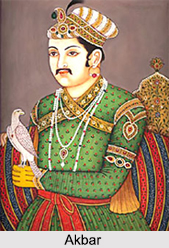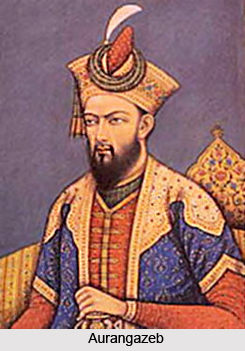 History of Jodhpur district resounds with the glory and valour of the royal dynasties that held sway here. The Rathores have been one of the main ruling families to have held sway over the district. According to Rathore tradition, the clan traces its origins back to the Hindu god, Lord Rama, hero of the epic Ramayana, and thence to the sun. So the Rathore`s belong to the Suryavansha (solar race) branch of the Kshatriya, the warrior caste of Hindus. Later, breaking into historical reality, in 470 A.D. Nayal Pal conquered the kingdom of Kanauj, near modern Kanpur in Uttar Pradesh. The Rathore capital for seven centuries, Kanauj fell in 1193 to the Afghan invaders led by Muhammad Ghori. The fleeing ruler, Jai Chand was drowned in the Ganga River. But his son Siyaji, had better luck. An expedient marriage alliance between the Rathore Siyaji and the sister of a local prince enabled the Rathores to consolidate themselves in this region. In fact, they prospered to such a degree that they managed to oust the Pratiharas of Mandore, nine km to the north of present day Jodhpur.
History of Jodhpur district resounds with the glory and valour of the royal dynasties that held sway here. The Rathores have been one of the main ruling families to have held sway over the district. According to Rathore tradition, the clan traces its origins back to the Hindu god, Lord Rama, hero of the epic Ramayana, and thence to the sun. So the Rathore`s belong to the Suryavansha (solar race) branch of the Kshatriya, the warrior caste of Hindus. Later, breaking into historical reality, in 470 A.D. Nayal Pal conquered the kingdom of Kanauj, near modern Kanpur in Uttar Pradesh. The Rathore capital for seven centuries, Kanauj fell in 1193 to the Afghan invaders led by Muhammad Ghori. The fleeing ruler, Jai Chand was drowned in the Ganga River. But his son Siyaji, had better luck. An expedient marriage alliance between the Rathore Siyaji and the sister of a local prince enabled the Rathores to consolidate themselves in this region. In fact, they prospered to such a degree that they managed to oust the Pratiharas of Mandore, nine km to the north of present day Jodhpur.
He later set himself up as an independent ruler around the wealthy trading centre of Pali, just south of Jodhpur. His descendants flourished, battled often, won often, and in 1381 Rao Chanda ousted the Parihars from Mandore which then became the Rathore seat of government. Rathore fortunes then turned for the better. Rao Chanda`s son and heir, Rainmal, won praise for his capture of Ajmer and was then entrusted with the care of his orphaned nephew, destined to inherit the Mewar throne of Chittor. In 1438 Rainmal was doped with opium, and finally shot dead. This triggered bitter feuds, ending with Mewar and Marwar becoming separate states. Rathore legend continues in various versions. One is that Jodha, one of Rainmal`s 24 sons, fled Chittor and finally, 15 years later, recaptured Mandore in 1453. Five years later he was acknowledged as ruler.
 By 1459, it became evident that a more secure headquarters was required. The high rocky ridge nine km to the south of Mandore was an obvious choice for the new city of Jodhpur. It was naturally enhanced by a fortress of staggering proportions, to which Rao Jodha`s successors added over the centuries. Rao Ganga Singh of Jodhpur (reigned 1516-32) fought alongside the army of the great warrior king of Mewar, Rana Sanga, against the first Mughal emperor, Babur. But over the next half century, the rulers of Jodhpur allied themselves with Babur`s grandson, Akbar. Several rulers of Jodhpur became trusted lieutenants of the Mughals, such as Raja Surender, who conquered Gujarat and much of the Deccan for Akbar, and Raja Gaj Singh, who put down the rebellion of the Mughal prince, Khurram, against his father, Jahangir. With the support of the Mughals, the court of Jodhpur flourished and the kingdom became a great centre of the arts and culture. In the 17th century Jodhpur became a flourishing centre of trade for the camel caravans moving from Central Asia to the parts of Gujarat and vice versa. In 1657, however, Maharaja Jaswant Singh (reigned 1638-78) backed the wrong prince in the great war of succession to the Mughal throne. He was in power for almost twenty-five years with Aurangzeb before he was sent out to the frontier as viceroy in Afghanistan. Aurangzeb then tried to seize his infant son, but loyal retainers smuggled the little prince out of his clutches, hidden, they say, in a basket of sweets.
By 1459, it became evident that a more secure headquarters was required. The high rocky ridge nine km to the south of Mandore was an obvious choice for the new city of Jodhpur. It was naturally enhanced by a fortress of staggering proportions, to which Rao Jodha`s successors added over the centuries. Rao Ganga Singh of Jodhpur (reigned 1516-32) fought alongside the army of the great warrior king of Mewar, Rana Sanga, against the first Mughal emperor, Babur. But over the next half century, the rulers of Jodhpur allied themselves with Babur`s grandson, Akbar. Several rulers of Jodhpur became trusted lieutenants of the Mughals, such as Raja Surender, who conquered Gujarat and much of the Deccan for Akbar, and Raja Gaj Singh, who put down the rebellion of the Mughal prince, Khurram, against his father, Jahangir. With the support of the Mughals, the court of Jodhpur flourished and the kingdom became a great centre of the arts and culture. In the 17th century Jodhpur became a flourishing centre of trade for the camel caravans moving from Central Asia to the parts of Gujarat and vice versa. In 1657, however, Maharaja Jaswant Singh (reigned 1638-78) backed the wrong prince in the great war of succession to the Mughal throne. He was in power for almost twenty-five years with Aurangzeb before he was sent out to the frontier as viceroy in Afghanistan. Aurangzeb then tried to seize his infant son, but loyal retainers smuggled the little prince out of his clutches, hidden, they say, in a basket of sweets.
The kingdom of Jodhpur then formed a triple alliance with Udaipur and Jaipur, which together threw off the Mughal yoke. As a result, the maharajas of Jodhpur finally regained the privilege of marrying Udaipur princesses something they had forfeited when they had allied themselves with the rulers of the Mughal dynasty. A condition of these marriages, however, was that the sons born of the Udaipur princesses would be first in line to the Jodhpur throne. This soon led to considerable jealousy. Nearly a century of turmoil followed.
In the 1870`s, Sir Pratap Singh came to the helm of affairs. He was a son of the Maharaja of Jodhpur. He himself ruled a neighbouring kingdom called Idar, and abdicated it to become Regent of Jodhpur, which he ruled, in effect, for nearly fifty years. Sir Pratap Singh was a great warrior and the epitome of Rajput chivalry. Sir Pratap Singh laid the foundation of a modern state in Jodhpur, which Maharaja Umaid Singh (reigned from 1918-47) built upon. The kingdom of Jodhpur was not merely the largest of the Rajput states, but also one of the most progressive.
In 1949, after the independence of India, it was merged into the newly created state of Rajasthan.






